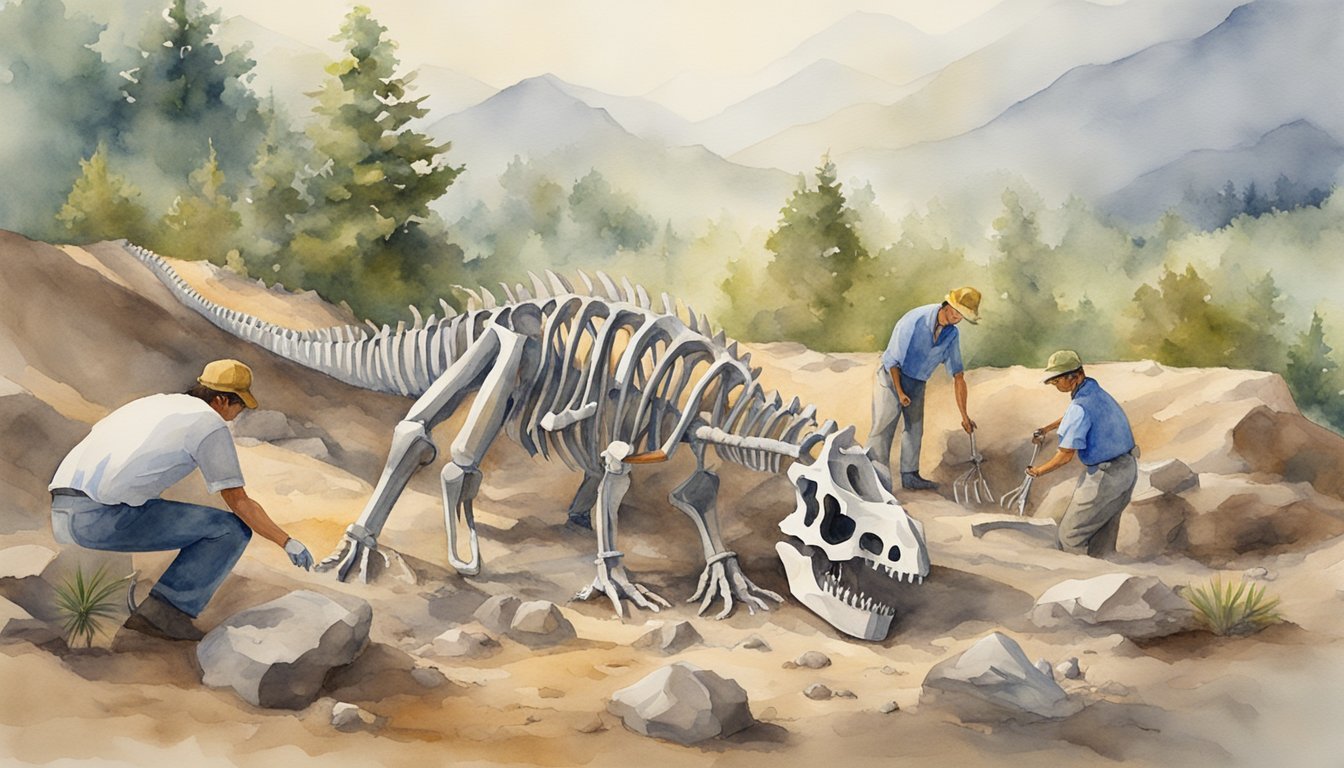Discovering New Dinosaur Species
Recent explorations have yielded remarkable discoveries, revealing new species that continue to shape our understanding of prehistoric life.
Exploring Recent Finds in Argentina and Chile
In Argentina, paleontologists have unearthed a new species that sheds light on the diversity of Cretaceous dinosaurs. This medium-sized herbivore, discovered to be a fast runner, adds a new dimension to our knowledge of dinosaur adaptations. Such finds, often exhibited in museums, not only delight the dinosaur enthusiasts but also contribute to important paleontological research.
Another remarkable discovery in Chile is a new species of armored dinosaur, the Stegouros elengassen. Its unique tail weapon resembles a medieval war club, demonstrating an unexpected form of dinosaur defensive architecture. The exquisitely preserved fossils continue to inform scientists about the lineage of ankylosaurs that roamed southern continents during the Late Cretaceous.
Uncovering Novel Fossilized Behaviors
The study of fossils also extends to understanding the behaviors of prehistoric species. For example, researchers analyzing theropod dinosaurs have found evidence suggesting complex social behaviors and hunting tactics. Fossilized tracks and remains provide insights on how these predators lived and interacted with the environment and each other.
Recent studies have also looked into rare fossil finds that offer a glimpse into the personal lives of dinosaurs. A notable discovery was the detailed fossil of a cloaca—a rare look into the reproductive anatomy of these ancient creatures, indicating how little we still know about the private lives of dinosaurs. Such discoveries underscore the dynamic and ever-evolving field of paleontology.
The Broader Impact of Dinosaur Research

Recent dinosaur discoveries have unveiled remarkable insights into the daily life of these ancient creatures and have had a significant influence on both modern science and culture.
Enhancing Our Understanding of Prehistoric Life
Through the meticulous work of paleontologists, the unveiling of fossils, such as those from the Cretaceous period, has provided an in-depth view into the world of dinosaurs. For instance, the discovery of new species like the velociraptor in Mongolia has shed light on predatory behaviors, while findings in South America and Germany have offered valuable data on diverse herbivorous species like the sauropodomorphs. The detailed study of these organisms helps reconstruct ancient ecosystems and offers clues about how life on Earth has evolved.
Influences on Modern Science and Culture
Dinosaur research extends beyond paleontology, influencing numerous aspects of modern science – from biology to the study of mass extinctions. Knowledge drawn from examining dinosaur fossils impacts the way scientists view modern-day conservation and climate change. Furthermore, these prehistoric giants captivate the public imagination, as evidenced by museum exhibits globally. They stimulate interest in science through the ever-popular ‘wonder theory,’ encouraging young minds to explore the natural world. Moreover, media coverage on topics like the discovery of a tyrannosaur’s last meal fosters a continued fascination and appreciation for the ancient past within the cultural zeitgeist.

